Compassion International Tanzania (CIT) registered* its 50,000 child two months ago on Februray 16.
This historic registration ushered in a new era for us. It was a moment to put down our tools, celebrate the Lord’s favor, and thank Him for what he has done and for His faithfulness. It was a milestone for the Tanzanian ministry, an achievement worth celebrating.
Now let’s see how we reached the 50,000 child mark and also learn about how our child registration process works.
The milestone occurred in Tabora, more than 650 kilometers from Arusha, where the head office of CIT is located. But the search actually began months earlier.
Finding Church Partners
Before going into a new area, CIT conducts country mapping to determine the level of poverty in one area as compared to another. Country mapping is necessary so we can determine where the greatest ministry need is.
After country mapping, we conduct a baseline survey to determine if the areas identified with a high degree of poverty have Christian churches whose mission matches ours.
This is critical because we work through the local church — it is the local church that actually implements the program and cares for the children. If there is no church, our ministry model won’t work, regardless of the degree of poverty that exists there.
We ask questions, such as:
- Does the church have classrooms to accommodate the children?
- Do they have people who can teach and work with children or who can learn to assist children?
- Are there peopleand children who can help the program continue?
This baseline survey helps us decide which areas and churches are a good fit. Of course, in all the stages we keep praying and asking God to lead us in the right path and to bring people who will be willing to sponsor children and release the resources needed.
After the baseline survey, we gather all the potential church partners for vision casting. In this gathering we share the importance of ministry to children and call on the church to awaken to the call of Jesus Christ to fulfill the Greatest Commandment.
After this, we choose the potential church partners and invite them to a partnership meeting. At this one-day meeting, it is time to pray together and for us to give relevant partnership documents to the new church partners.
If the partners agree on the conditions, they sign a partnership agreement with us. These partnership agreements give room to church partners to start preparing environments to begin the ministry. They start recruiting project workers and create a child ministry committee formed from church members.
The church has to find those able and qualified to work in the project as project coordinator, project accountant, project social worker, and project health worker.
Once all the project workers are chosen, they attend the “One-Month Child Ministry Foundation Course” that all project workers go through.
In this course, the newly recruited project workers are trained on how to implement the ministry and how to minister to each child individually.
They also learn what is expected of them and different ways and procedures of reporting and giving feedback to us. They get to know the organizational structure of CIT, the departments involved, and how each department works.
Screening and Registration
All this leads up to child screening and registration.
How screening is done: Teams are created for the screening process. A team is made up of a child ministry worker, one staff member from CIT and local church members who know the people in the community.
The teams are assigned different geographic locations around the church. Each team goes from house to house in search of children who are in need.
Where there is an age-appropriate child, the team determines the level of poverty by asking several questions and by observing the family environment. If the family agrees to let their child be registered, the child will be given an identification number and instructions about what to do on the registration day.
This screening process may take two or three days depending on several factors, such as the distance from one house to another, the time the teams take to explain to the parents or guardians about the ministry and how it works, and the number of teams. The teams continue to screen children until they have found the number of children the project can register.
After screening comes the big day.
Registration day: This is the day of celebration. A new era dawns in the life of each child.
For our historic day, rain fell heavily as the day began, but this did not hamper children and mothers from gathering at the church for registration.
Many Africans associate the fall of rain with blessing, and February 16 was a day of blessing. Children and mothers rushed to the church door to make sure they didn’t miss the registration.
On registration day, the parents hear in detail about how the ministry will be conducted and what level of commitment is expected from them to support their children. If the parents feels that they cannot meet the obligation, they still have the freedom to pull out of the process, and the chance will be given to another child.
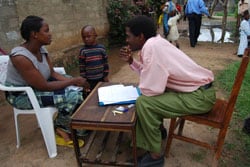 Next, the project workers start with one child, working carefully with the parents to gather accurate information about each child to send to the sponsors.
Next, the project workers start with one child, working carefully with the parents to gather accurate information about each child to send to the sponsors.
This is technically known as a “New Case History,” written in what we call the case study form. This information is what will be processed and sent to our Global Ministry Center in Colorado Springs, then to our partner countries and finally to the new sponsors.
After the case study form is completed, the child proudly stands up for his or her picture to be taken — perhaps the first picture ever taken of the child — and an identification number is assigned.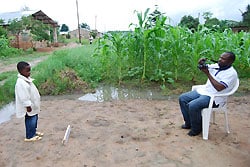
Then the pictures and case study are reviewed to see if there is any error that needs to be rectified. After this, the parents are given instructions about when the child will attend the center. If everything is well, the child will start coming to the center the following Saturday.
The 50,000 Child
Now, after all the preparation was done the teams in Tabora set to work. There were eight teams of three or four people each. Their duty was to register 380 children, and this would bring the number of registered children to 49,999. Then, all the teams would gather together to screen number 381.
No special arrangements were made to prepare the child. Screening followed the normal process. And the special child happened to be Hamisi.
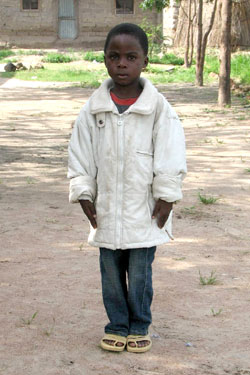 Although Hamisi is the child that marks this historic registration, he is no different from the other children screened and registered in his area and in Tabora in general.
Although Hamisi is the child that marks this historic registration, he is no different from the other children screened and registered in his area and in Tabora in general.
The poverty that engulfed Hamisi’s parents had affected him at the age of 6 — he had not started school. His mother got pregnant by a man who abandoned her and Hamisi. That was before she was married to her current husband. Hamisi is still the only child by the couple.
On the day of Hamisi’s registration the church was filled. The occasion was even graced by the high level government district authority. The district commissioner, who is a presidential appointee, was there to witness the registration exercise.
Children and their parents filled the church, some children sitting on the laps of their parents or guardians. They came as early as 7 a.m. because no one wanted to miss the opportunity.
Some, being Muslim, were setting their feet inside the church for the first time. Religious boundaries did not deter them, nor Christian prayers, songs, nor reading from the Bible.
That day marked a new beginning for each child. One day each week, for the rest of the time he or she will be in the program, the child will go to the center.
The child can stay in the program from age 3 up to age 22**, when it is expected he or she will have fulfilled all the core programs. A child may graduate from the program before age 22 if he or she has acquired enough skills to make him or her a fulfilled and responsible Christian adult — the ultimate vision of Compassion International.
* A registered child is different than a sponsored child in that the registered child doesn’t have a sponsor yet.
**Graduation age from the child sponsorship program differs by country.

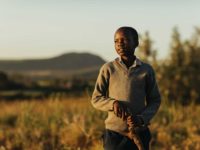

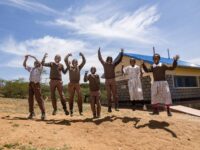



15 Comments |Add a comment
Glad to know the “graduation age” for kids in Tanzania. I recently signed up to sponsor 19-year-old Jane, and had been curious as to how long she had left in Compassion (barring needing to leave for any other reason, such as moving or economic improvement). I knew it was either 21 or 22, depending on the country.
However, I didn’t know that it was when the child had finished the core programs set up by Compassion–not necessarily when they finish high school/reach the maximum age (in a “whichever comes first” scenario).
Thanks for the informative article regarding establishing new projects. It was a great surprise, though it shouldn’t have been, that I came across this article. I have been curious about how Compassion operates initially in a new area or project, and the title didn’t really reveal the contents. But, the Lord led me to it, and many questions are now answered or clearer.
Lord bless. We have much to be thankful for this Thanksgiving season to lift us through dire politics, family problems, illness and such. These children, and their families, we support are tremendous blessings. Though I’m a new sponsor, I feel more honored and blessed being able to sponsor a needy child the Lord Jesus led me to, than the child could ever be. But it works both ways; He’s so good.
Diane
I have worked with Compassion International Tanzania as a Partnership Facilitator for four years!
I miss those moment when i was going for child screening and registration!
God bless you all for good work you are doing! your work is not in vain.
You just can’t believe how blessed i have been by reading this story. I was composing a vision casting proposal when i landed on this noble documentary/story.
it has given me a systematic vision on what each Field Office should do for our Committed and God given Sponsors. I have logically and systematically understood all the steps through child registration and posted this my fellow CIV-Administrators in Africa.
Charles, I just wanted to follow up and let you know that Isenara (ed. Last name removed for privacy reasons), a five year old little girl from Borgne, Haiti, was sponsored by my father and step-mother as a direct result of this post!!! Don’t be surprised, God works in amazing ways! 😉
Thanks, Amber.
Hi Andrzej, In the registration process, Compassion’s programs are explained to the parents/caregivers, that their child will be receiving Christian training as part of Compassion’s holistic ministry to the children. Because many projects are located in non-Christian communities, Compassion ensures that each parent or caregiver is willing for their child to engage in these classes and activities, and that they will also support their child in attending the project. (Project attendance varies country to country, according to schooling in that country. Some projects meet once a week, twice a week, five times a week, etc.) “Level of commitment” doesn’t refer to any monetary commitment, but rather their willingness to allow their child to participate in the program.
Please, write more about what is the “level of commitment” required from the parents of a registered child.
I am really taken by surprise that the article is speaking to many potential sponsors and that a child has got sponsored already as a result of simply wring on registration process! Every time I sit down to write a story, I ask myself, “God, am I doing the right thing in the right way? And I make this prayer: “Lord use these words to touch someone for the cause of children and for your glory.”
I thank God because I am an unworthy servant. I have only done my duty.
Dear Amber and Charles,
I join with sponsors and others to thank God for your credible and remarkable work you have done in writing and publishing this historic child registration. Above all, just remember,”…we are created in Christ Jesus to do good works, which God prepared in Advance for us to do.” (Eph 2:10)
I’ve forwarded your encouraging comments to Charles, and I’m sure he’ll appreciate them so much. I think he may be out in the field right now on assignment. So, I’ll pass his words about this story on to you:
“I feel so humbled that I can write a story that will have an impact to the sponsors. All glory I give to God.”
Just a quick followup note to let you know that this inspired my father to become a sponsor! I fwd’d this blog to family & friends and got a quick response from my Dad asking how he can join! He and my stepmother are viewing children as I write this. Bless you!
Thank you for explaining all of that in such detail. I am imagining our little girl and her family in Brazil going through this whole process. And I am so excited that she has just moved from registered to sponsored!! Bless you for the amazing work you are doing for Him!!
This is the most complete and detailed I’ve seen or heard about church and child selection. Thank you!
Thank you for sharing all of this. As a sponsor, I was unaware of the selection process for churches, as well as many of the details for child selection. It is even more inspiring to me since I recently chose a little boy from Tanzania to sponsor. Thinking about him and his aunt going through this process, with such anticipation and high hopes, reinforces my decision to sponsor. While many people might say “one person really can’t make a difference” I believe in my heart that I am making a big difference to that little boy as well as my little girl in Ecuador. With God, we can do anything!